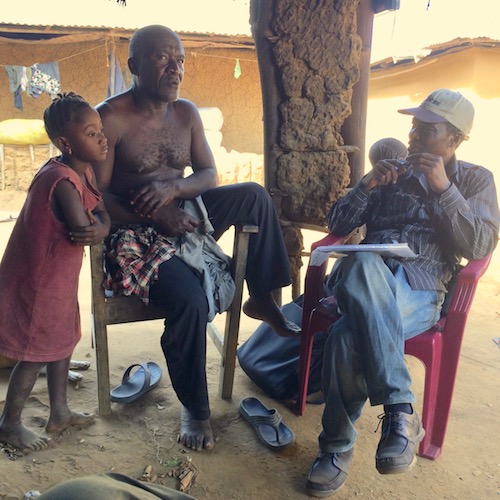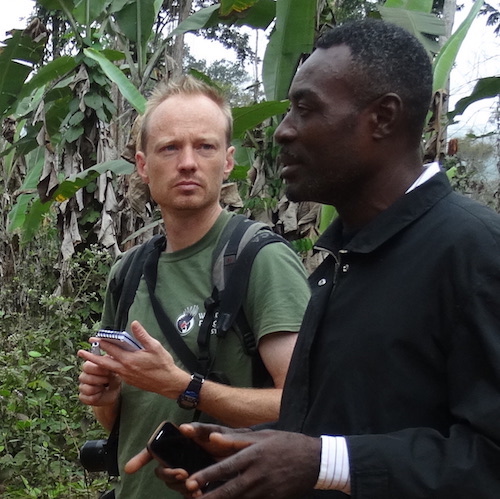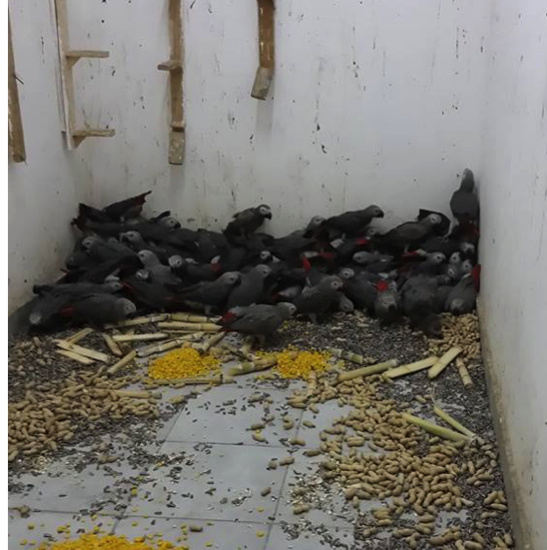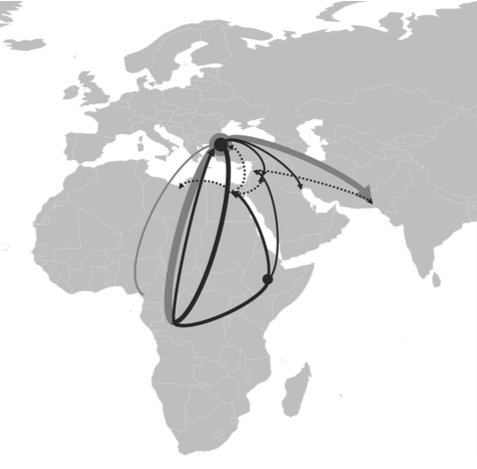Today the 2018 Illegal Wildlife Trade (IWT) Conference draws to a close in London. At the end of a week of meetings between leaders from around the world, academics, NGOs, local communities and many others, two things are clear: illegal trade is a major threat to wildlife and sustainable livelihoods, and it's imperative that the international community works together to find solutions to often wickedly complex and intertwined problems.
Each year many thousands of parrots are trapped in the wild, destined for life in a cage. Many of these come from Africa, which has the dubious distinction of having three of the top four most-traded birds listed on CITES (1). This threat, combined with the loss of habitat, has sadly seen several African parrots uplisted on the IUCN Red List of threatened species. The global parrot trade is also driving the establishment of non-native species, the spread of diseases and can have distressing consequences for the welfare of the parrots involved (2,3).
Tackling the trade in wild parrots has always been central to the World Parrot Trust’s mission of conserving parrots in the wild. The issues are deeply complex and simple solutions elusive. A multi-faceted and evidence-based approach is essential.
A major theme of the week’s meetings was the critical importance of listening to and engaging with local communities. Engaging with local communities that live alongside important parrot populations is essential for both understanding and addressing threats. In 2018 WPT initiated and supported multiple initiatives involving local communities on the conservation frontline. Last month the first national status assessment for Timneh parrots in Guinea-Bissau was published(4), which was the culmination of several years of hard work by project partners. By visiting and speaking with the communities who live alongside, and in some cases trap, these endangered parrots valuable understanding could be gained. In Sierra Leone a similar approach has enabled new breeding sites and previously unknown strongholds for the species to be identified. In Nigeria surveys have sought to understand the conservation status of wild populations of African Grey parrots as well as the cultural significance and economic value of the species for local communities.


Top: Dr. Okoni-Williams hears from a community leader about Timneh parrots (January 2018, Sierra Leone). Bottom: José Antonio Nhoca explains how trappers come from neighbouring countries looking for African Grey parrots (September 2018, Angola).
Another major theme was the need for a better evidence base on which informed interventions to stop illegal trade can be based. While drawing on local knowledge can be hugely informative, it's also critical to understand global trade chains and the constantly changing dynamics of trade. Another area of WPT research draws on multiple information sources to improve understanding of the changing nature of the global parrot trade and to identify key transport routes and opportunities for enforcement (1,2,5). As well as ensuring our research is published in leading peer-reviewed journals, WPT also works hard to get the right information in front of the right people, preparing reports and meeting with policymakers so that the evidence leads to action.


Top. Monitoring of online trade reveals how African Grey parrots are traded providing intelligence for law enforcement. Bottom. Investigations of social media have revealed frequently used illegal trade routes for parrots out of Africa.
Yet another theme was the emergence of cyber-enabled wildlife crime and the rise of social media as a means to trade wildlife. WPT’s trade specialists have been monitoring trade in parrots via social media for several years and sharing intelligence with enforcement agencies. A recent collaboration with World Animal Protection has led to the publication of a ground-breaking study examining the use of social media to trade parrots (2). This emerging threat needs urgently addressing. The recently launched Global Coalition to End Wildlife Trafficking Online, signed by most major tech companies, is an important step in the right direction and specialists in particular taxonomic groups have a vital role to play in assisting this process.
Perhaps the most important discussions to emerge this week were about ways in which a diversity of groups can work together to achieve coordinated and evidence-based action. The parrot trade does not operate in isolation and overlaps with trade in many other species. The legal trade in parrots can provide cover for illegal trade in other species. Only through strong and effective partnerships will we address the threat to wildlife and communities around the world.
WPT IWT research in 2018
1. Martin, R. O. (2018). The wild bird trade and African parrots: past, present and future challenges. Ostrich-Journal of African Ornithology, 1–5. doi:10.2989/00306525.2017.1397787
2. Martin, R. O., Senni, C., and D'Cruze, N. C. (2018). Trade in wild-sourced African grey parrots: Insights via social media. Global Ecology and Conservation, e00429. doi:10.1016/j.gecco.2018.e00429
3. Fogell, D. J., Martin, R. O., Bunbury, N., Lawson, B., Sells, J., McKeand, A. M., Tatayah, V., Trung, C. T., and Groombridge, J. J. (2018). Trade and conservation implications of new beak and feather disease virus detection in native and introduced parrots. Conservation Biology 66, 1005–11. doi:10.1111/cobi.13214
4. Lopes, D. C., Martin, R. O., Henriques, M., Monteiro, H., Cardoso, P., Tchantchalam, Q., Pires, A. J., Regalla, A., and Catry, P. (2018). Combining local knowledge and field surveys to determine status and threats to Timneh Parrots Psittacus timneh in Guinea-Bissau. Bird Conservation International 118, 1–13. doi:10.1017/S0959270918000321
5. Martin, R. O. (2018). Grey areas: temporal and geographical dynamics of international trade of Grey and Timneh Parrots (Psittacus erithacusand P. timneh) under CITES. Emu - Austral Ornithology 118, 113–125. doi:10.1080/01584197.2017.1369854
































